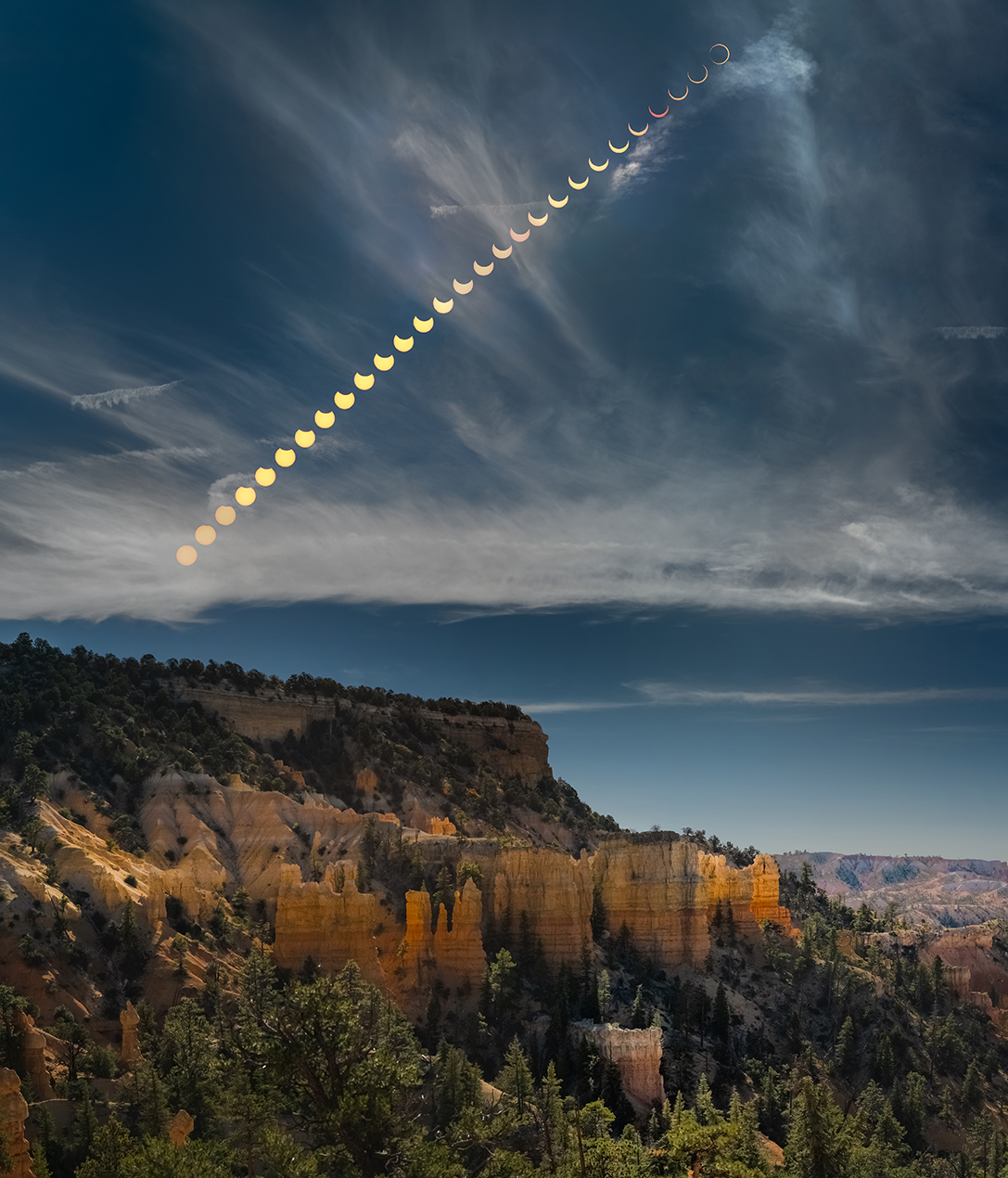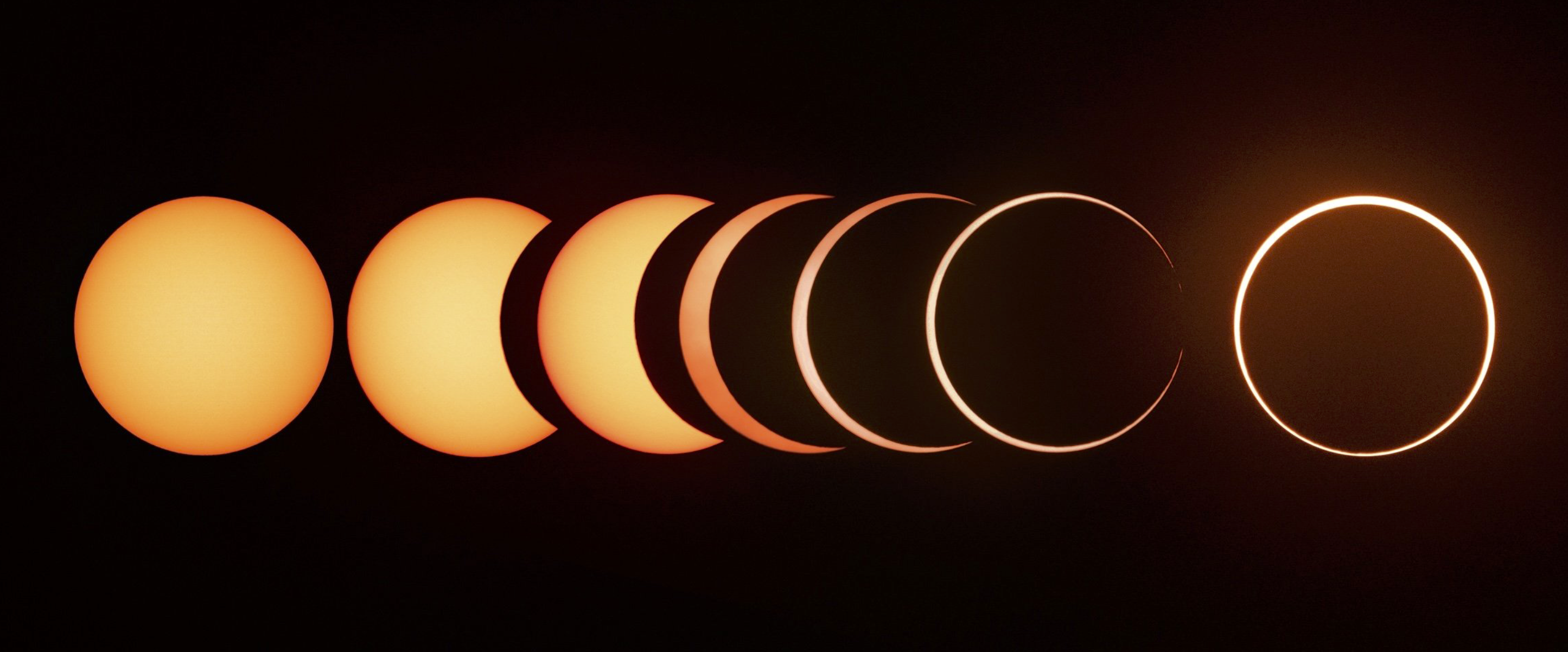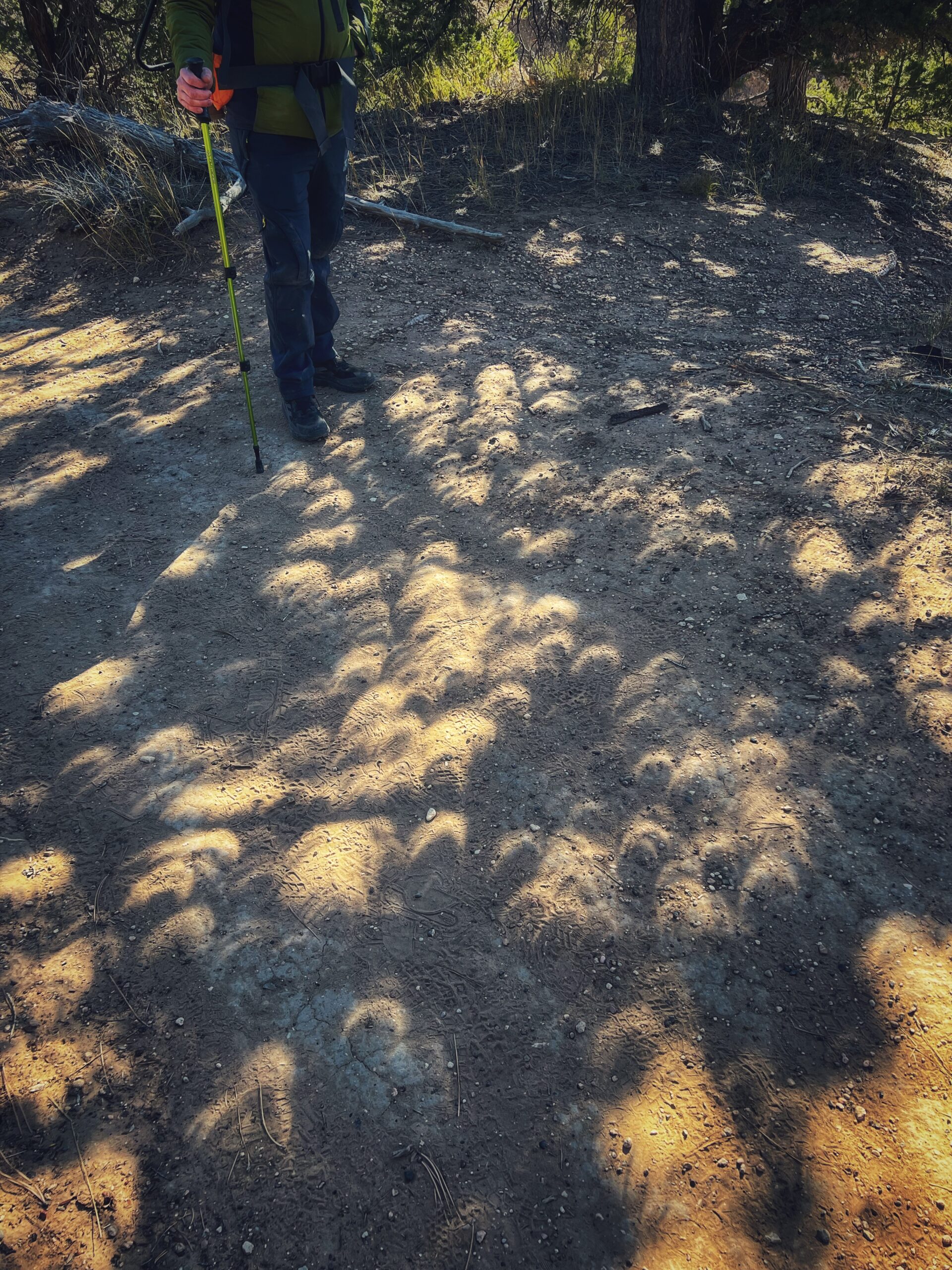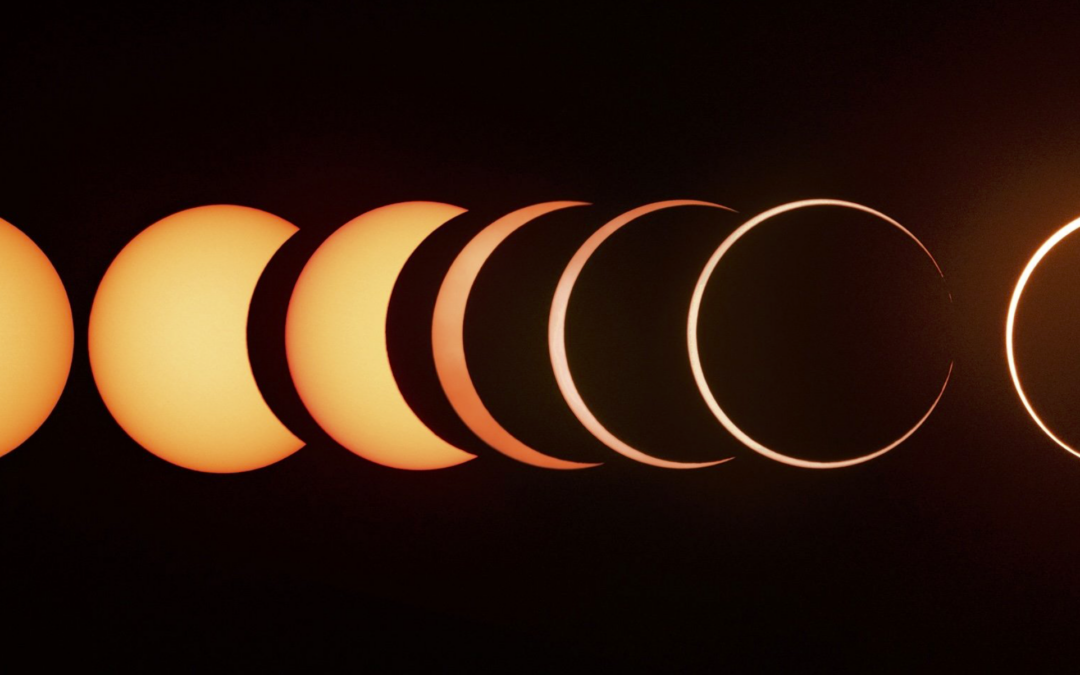
BY BRYONY RICHARDS, Ph.D.
On Saturday, October 14, 2023, skywatchers across a swath of the Americas were treated to a celestial spectacle: an annular solar eclipse. This astronomical event occurs when the Moon, passing directly between Earth and the Sun, is too far from Earth to completely cover the Sun’s disk. The result is a dazzling “ring of fire” surrounding the dark silhouette of the Moon.
We decided to head to Bryce Canyon National Park to try to get close to the path of full angularity (the point at which the ring of sun surrounding the moon is symmetrical) but to also have a spectacular geological foreground for photos. We chose an area of the canyon a little off the beaten path, with spectacular sandstone pinnacles and a hill of sandstone to frame the eclipse. You can see in the photo that we just missed the exact path of annularity.
Bryce Canyon, a natural amphitheater located in southern Utah, is renowned for its striking geological features, including spire-shaped rock formations known as hoodoos. The story of Bryce Canyon begins during the Cretaceous period, approximately 50 to 70 million years ago, when the area was situated near the edge of a large ancient lake. Over millions of years, layers of sediment from the surrounding highlands accumulated, compressing into limestone, siltstone, dolomite, and mudstone. This layering created the Claron Formation, the primary rock layer visible in the canyon today.
The uplift of the Colorado Plateau, starting around 10 million years ago, elevated these rock layers, exposing them to the forces of erosion. The unique geological formations of Bryce Canyon, including its hoodoos, arches, and natural bridges, are the result of differential erosion. This process is driven by the region’s extreme temperature fluctuations (on average ranging from ~20-80 degrees Fahrenheit), where water seeps into rock cracks, freezes, and expands, breaking the rock apart over time. The freeze-thaw cycle is particularly effective in an environment like Bryce Canyon, where more than 200 freeze-thaw cycles occur each year. Additionally, rainwater, slightly acidic due to absorbed carbon dioxide from the atmosphere, further dissolves the limestone, carving intricate formations and widening the crevices between rocks.
But, don’t worry if you missed this last eclipse! The next annular eclipse will be on October 2nd, 2024 when the solar ring of fire will be seen from Earth’s ring of fire along the coast of Southern Chile and Argentina. The next total eclipse will be visible across the eastern United States through Texas, Arkansas, Tennessee, and Missouri.


Photo: Major stages of the annular eclipse.

Photo: Eclipse tree.

